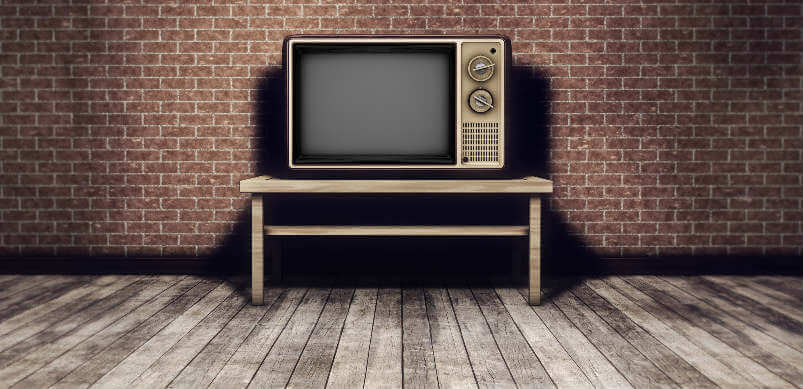
5 Tips To Help You Get More From Your TV
November 11, 2015 | DIY & Home Improvement | No comments
If I was to ask you to name your favourite TV programme both now and as a child, I’d take a good guess you would find it difficult to pick one, after all the average TV viewing time in the UK is 4 hours a day.
In fact, TV has a UN declared day – November 21st – and since 1996, this has been declared as World TV Day, which is aimed at recognising the impact TV has on decision making throughout the world.
Whilst the day is aimed at highlighting the power TV has in serious matters, we appreciate you’re more likely to see your TV as a chance to escape reality, and to find out what is going on in Albert Square / The Rovers Return or to catch the football which you were unable to get tickets for.
This is why we’ve compiled 5 tips to help you get the most from your TV and to enhance your viewing pleasures – and all without spending a small fortune.
Use The Right Connections:
As technology advances, it can be difficult to keep up. First there was Betamax, then VHS players, before DVD players and most recently Blu-Rays. And then there’s the choice between Freeview, cable TV, Sky, etc.
Whilst keeping up with the advances in technology can seem difficult, it’s also important to make sure you keep up to date with the connections you should be using between device and TV.
For example, if you want to get the most out of your Blu-Ray player or your HD box you shouldn’t be using a SCART lead, instead for the perfect viewing experience and to ensure you get a crisp picture you should be using a HDMI lead.
Is It Bright Enough?
All TV sets come with a factory setting as standard, however this is often too bright for everyday viewing and it’s recommended to adjust your TV accordingly.
Whilst the brightness will vary from person to person, there are a few rules of thumb you should consider if you want to get the perfect picture resolution.
If the image appears to be too bright, decrease the colour values in the setting menu. If it appears too dark, increase the colour values. A great way to get the perfect colour contrast for your TV is when watching a football game, to use a replica shirt you have at home as a guide.
Get The Perfect Sound:
Viewing the TV is only half the pleasure, the other half is getting the perfect sound – and to achieve this, we recommend you opt for surround sound (if your budget can afford it).
To get the most from your surround sound, there are a few steps which you should take:
- Position any secondary speakers away from the wall to avoid unwanted echoes
- Place speakers an equal distance away from the viewer to ensure optimum performance
Along with using surround sound, when it comes to watching sport on TV check to see if your TV comes with a special “sporting” audio feature. Such a feature will adjust the bass and treble to create an accurate reproduction of the sound within the stadium.
Location, Location, Location:
We’re not talking about the popular Channel 4 programme hosted by Kirstie and Phil, but instead the location of your TV in your room. The position of your TV can enhance or detract your viewing pleasure, so it’s important to make sure you get it right.
If you’ve got an LED LCD TV for example, if the TV is at an angle – either vertically or horizontally – you’re likely to suffer a loss on contrast and colour when watching it.
As a rule of thumb, whatever TV you have, for the best viewing angle we recommend you ensure all seating positions are as straight on to the TV as possible, and if you’re mounting the TV on the wall using a TV wall bracket, be careful not to place it too high. The perfect height for your TV to be when mounted is level with your eyes when you’re sitting down.
Lights, Camera, Action:
The lighting in your room plays a big part in the overall decor, but have you ever realised that it can also play a part in your TV viewing experiences? Unfortunately it can.
LCD screens for example subjectively behave differently according to the ambient light levels in the room. This is because LED TVs use backlit display technology. What this means is that in a dark room your TV is likely to emit a very bright glow, almost torch like.
Plasma TVs on the other hand will not do this, as they are self-illuminating displays, and it has been suggested the viewing pleasure from a Plasma TV can be enhanced in a low-lit room, making them ideal for watching films on.
So next time you’re about to settle down on the couch with a cup of tea and a few biscuits, make sure the position of the TV is correct, the brightness and sound are set to the right levels, that you’re fully optimising your TV and the light levels in the room are perfect for your viewing delights.
Tags: Entertainment, TV, World TV Day

